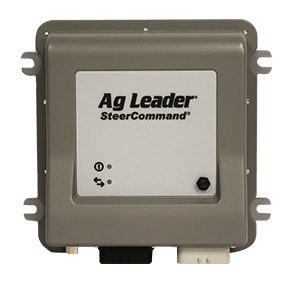What is PWM?
Throughout the growing season, the sprayer passes over a field multiple times to achieve different objectives like crop nutrition, weed control, and disease/insect management. With every application, the products in the tank must be delivered at the right rate and at the right coverage to be effective.
“Farmers invest significant time and money in spraying applications,” says Logan Handsaker, Product Sales Specialist, Ag Leader Technology. “Yet, sprayers without pulse width modulation (PWM) technology frequently can’t achieve the right rate and right coverage to deliver the best possible results in the field.”
How PWM works
On a traditional sprayer, a nozzle is always open during an application. The flow rate is regulated to account for ground speed changes which results in pressure and coverage variations. When more flow is needed, the boom pressure must increase to get more volume out of the nozzle. When less flow is needed, boom pressure reduces. As pressure varies, spray coverage is affected causing inconsistent droplet size and pattern.
PWM technology was developed to overcome the pressure variation issue.
The nozzle in a PWM system cycles between open and close continuously at a high frequency (10 to 20 Hz) to deliver the target rate. When the sprayer travels faster and more flow is needed to achieve the target rate, each pulse (or duty cycle) stays open longer allowing additional product to be dispensed. When the sprayer travels slower and less flow is needed, the pulse becomes shorter to allow less flow to be dispensed.
“There are always 10 open/close cycles per second regardless of speed and flow demand,” Handsaker says. “We are simply changing the amount of time we hold the valve open in each of these cycles.”
Another key benefit of PWM is turn compensation.
Pulse width modulation (PWM) systems like Ag Leader’s RightSpot allow the user to move beyond the limitations of a conventional sprayer to ensure products are applied at the right rate and at the right coverage.
“Most fields require operators to apply while turning,” Handsaker says. “However, conventional sprayers cannot compensate for turns and apply too much or too little on the inside and outside of the boom, respectively. PWM nozzle technology responds to curved paths by dispensing the appropriate amount based on the speed each end of the boom is traveling.”
Get it right with RightSpot™
PWM nozzle systems like Ag Leader’s RightSpot, an aftermarket upgrade for sprayers, allow the user to move beyond the limitations of a conventional sprayer to ensure products are applied at the right rate and at the right coverage.
With RightSpot, flow rate and pressure are controlled independently. Individual pulsing nozzles maintain a consistent, user-defined boom pressure across a wide range of speed. The operator can speed up or slow down without sacrificing the droplet size or coverage applied. Automatic shut-off at a nozzle level allows the operator to cover irregular shapes without excessive overlap to reduce product waste. Headlands, terraces, and curves are also accounted for with turn compensation maintaining consistent rate applied on the inner and outer portions of the boom.
RightSpot is controlled through the year-round InCommand® 1200 display for complete visibility inside and outside the cab.
“With PWM spraying technology, we are improving the quality and precision of the sprayer to ensure more acres receive the right treatment, and we see the best possible result in the field,” Handsaker says.
Renewed interest in PWM technology
PWM is not a new concept. First introduced in the mid 1990s, the technology has gained renewed interest in the last decade because of significant market changes including:
1. Many problematic weeds have become resistant to glyphosate.
2. Glyphosate alternatives are being used and are often necessary. These products are:
• more dependent on quality coverage and accurate rates for efficacy.
• more expensive causing farmers to be extra conscious of spraying efficiency.
• more hazardous to the current or following crop if over applied.
3. There is heightened awareness and emphasis on applying herbicides correctly to mitigate additional weed resistance.
“These market changes have led most OEM sprayer manufacturers to embrace PWM nozzles recognizing their superiority in application quality and consistency beyond conventional sprayer control,” Handsaker says. •
















